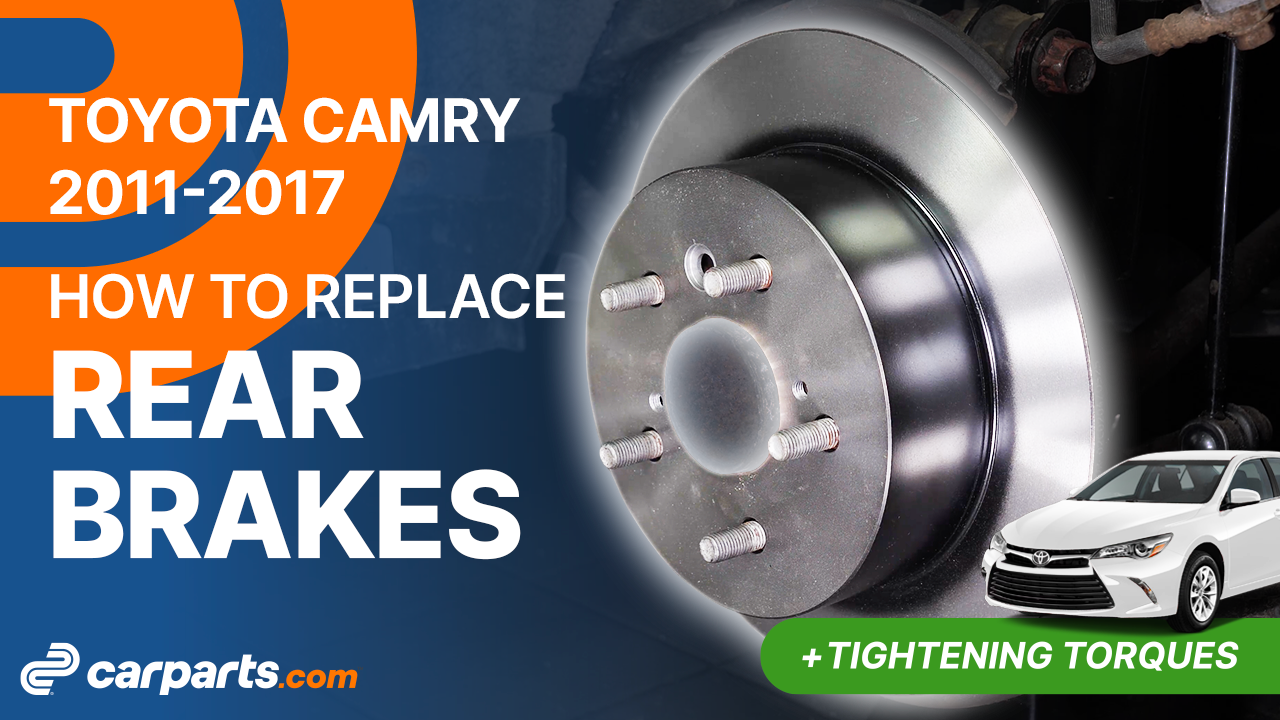
How to replace the rear brakes 2011-2017 Toyota Camry
To replace the rear brakes on your Camry It’s easy. You will be asked to open the hood, open the brake fluid reservoir, lift the vehicle as well as carry out a few other steps. You can carry out this tutorial of 19 chapters in 60 minutes. Take your 10 mm wrench and your brake wind-back Tool and let’s get started!
Duration
60 minutes
Number of steps
19
Difficulty out of 5
2
Average savings
$80
Parts You Will Need
Tools You Will Need
Step-by-Step Installation
Chapter 1:
Open the hood
Step 1/3
Turn off your vehicle’s ignition, set the parking brake, pull the hood release handle and open the hood.


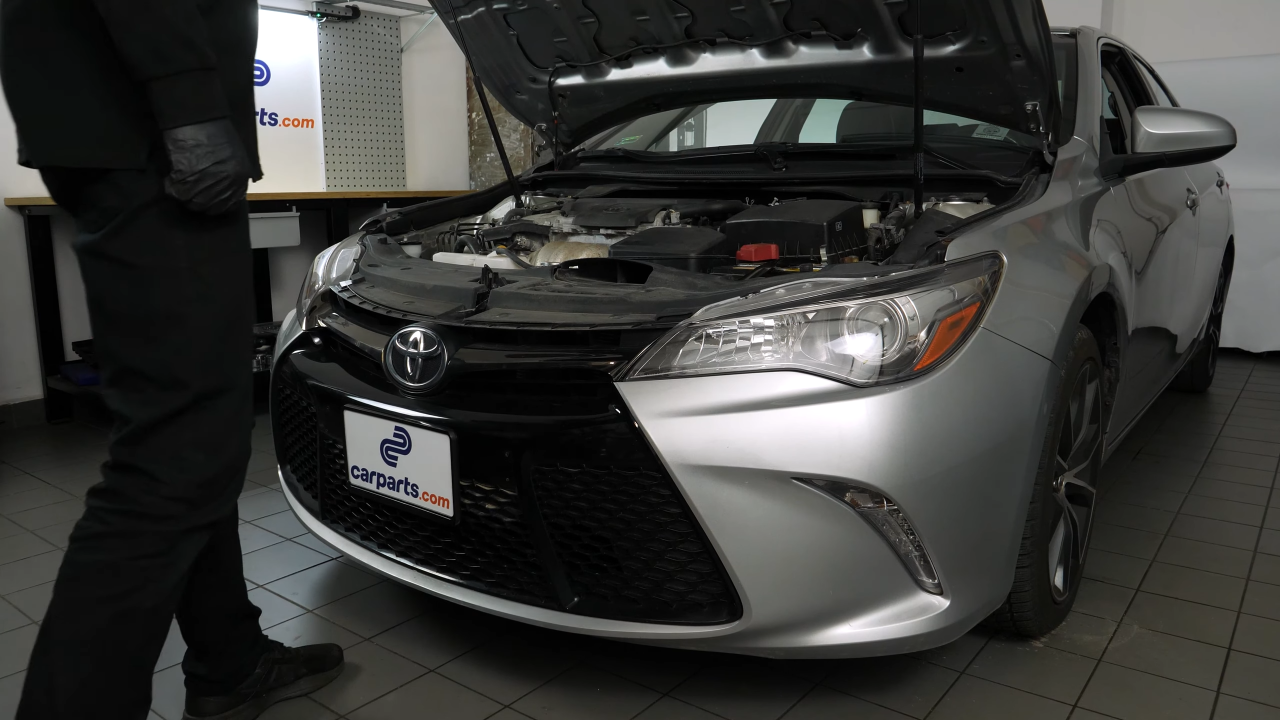
Chapter 1:
Step 2/3
Open the brake fluid reservoir.

Chapter 1:
Step 3/3
Loosen the wheel lug nuts on the rear wheels.

Chapter 2:
Lift the vehicle
Step 1/2
Lift the rear of your vehicle. Place the vehicle on the jack stands.


Chapter 2:
Step 2/2
Don’t forget to put the wheels under the vehicle!

Chapter 3:
Loosen the parking brake
Step 1/2
It is now necessary to release the parking brake in order to clear the grip of the drum brake shoes on the disc.

Chapter 3:
Step 2/2
You will have to remove the shutter cover located on the disc with flathead screwdriver. You can now reach the adjustment mechanism of the brake shoes, and retract the brake shoes until the disc is free.
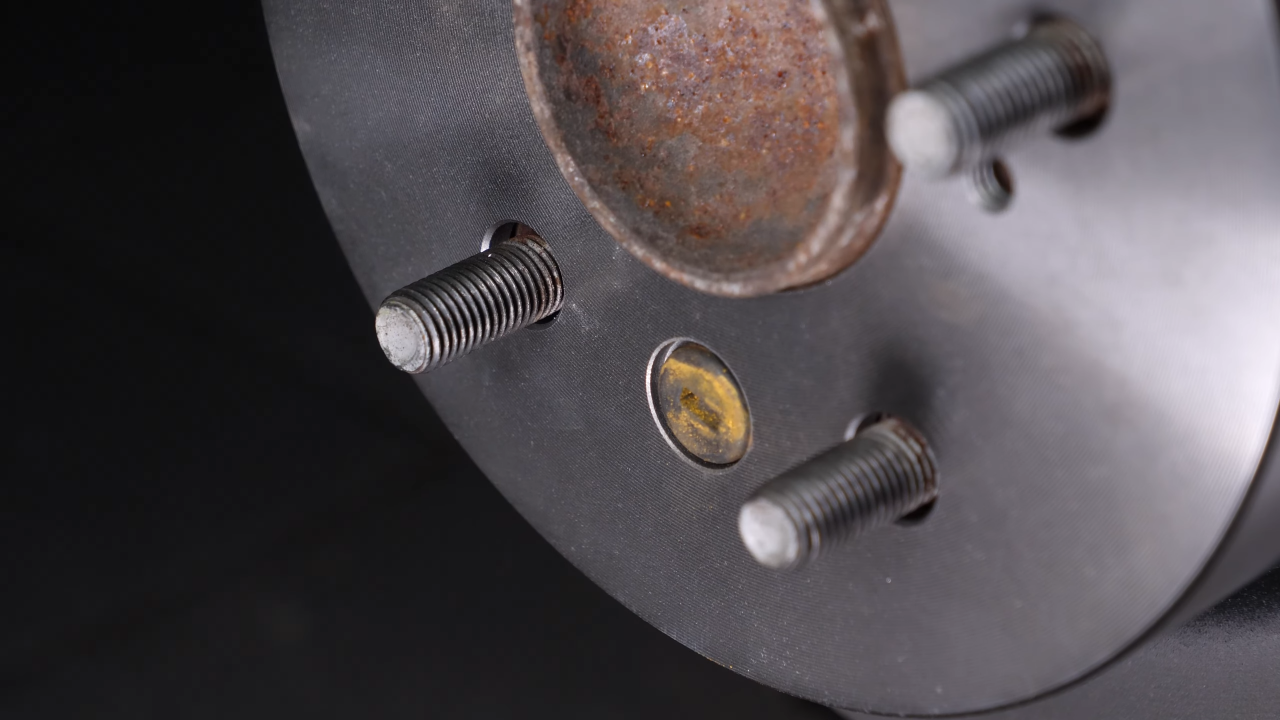
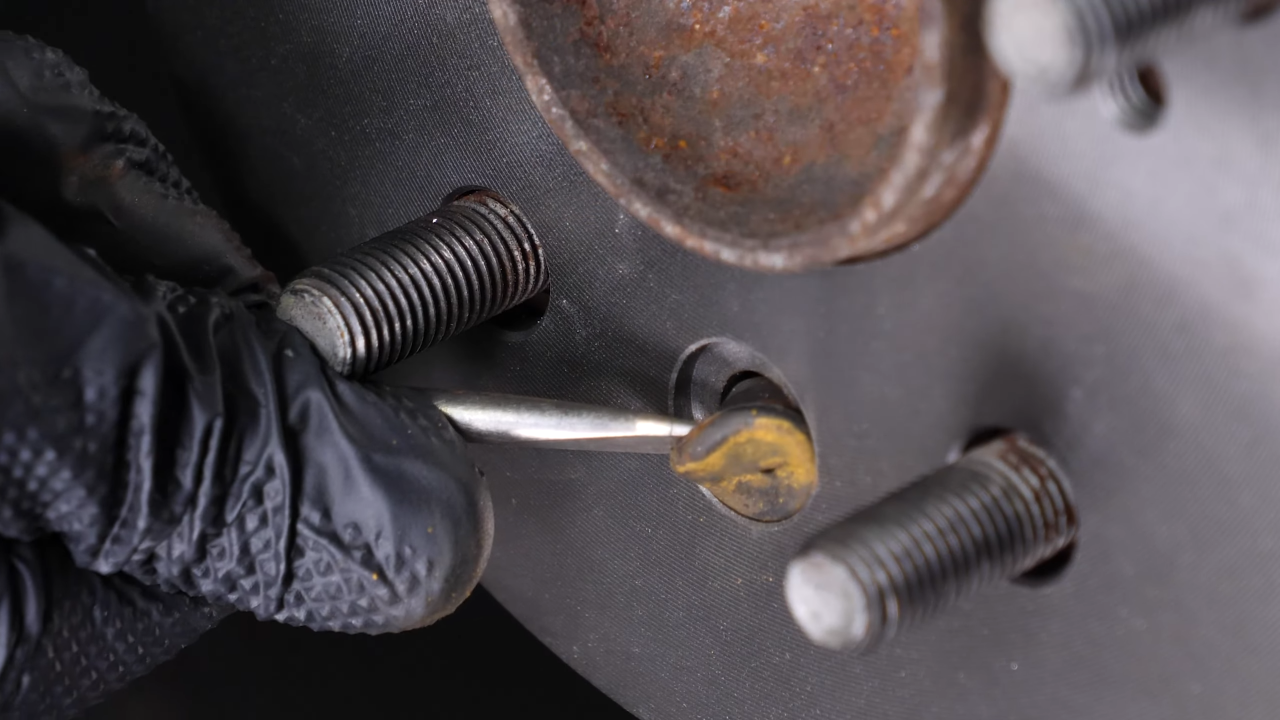
Chapter 4:
Retract the piston
Step 1/1
Insert a flathead screwdriver to the outer extremity of the oblong hole located on the front of the brake caliper. Lift it off using the screwdriver as a lever by pulling it towards you.This will cause the piston to retract slightly, so that the caliper can be removed more easily for the next steps.


Chapter 5:
Loosen the slide pins
Step 1/2
With a 14mm wrench, unscrew the slide pins. You can use a 14mm wrench to prevent the bolts from rotating.


Chapter 5:
Step 2/2
Then, remove them.
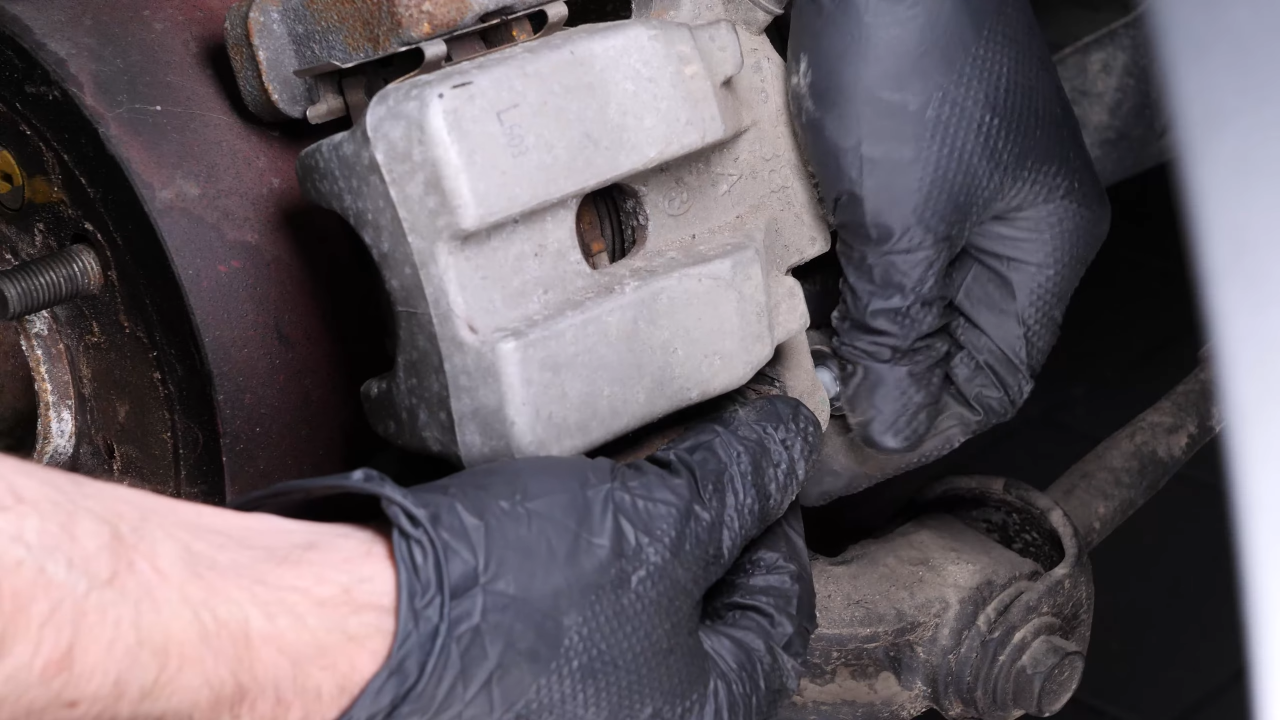

Chapter 6:
Hang the brake caliper on the strut
Step 1/1
Tip: attach a piece of electrical cable, or a hook, to one of the strut spring coils You can now remove the brake caliper and hand it to the previously installed hook.
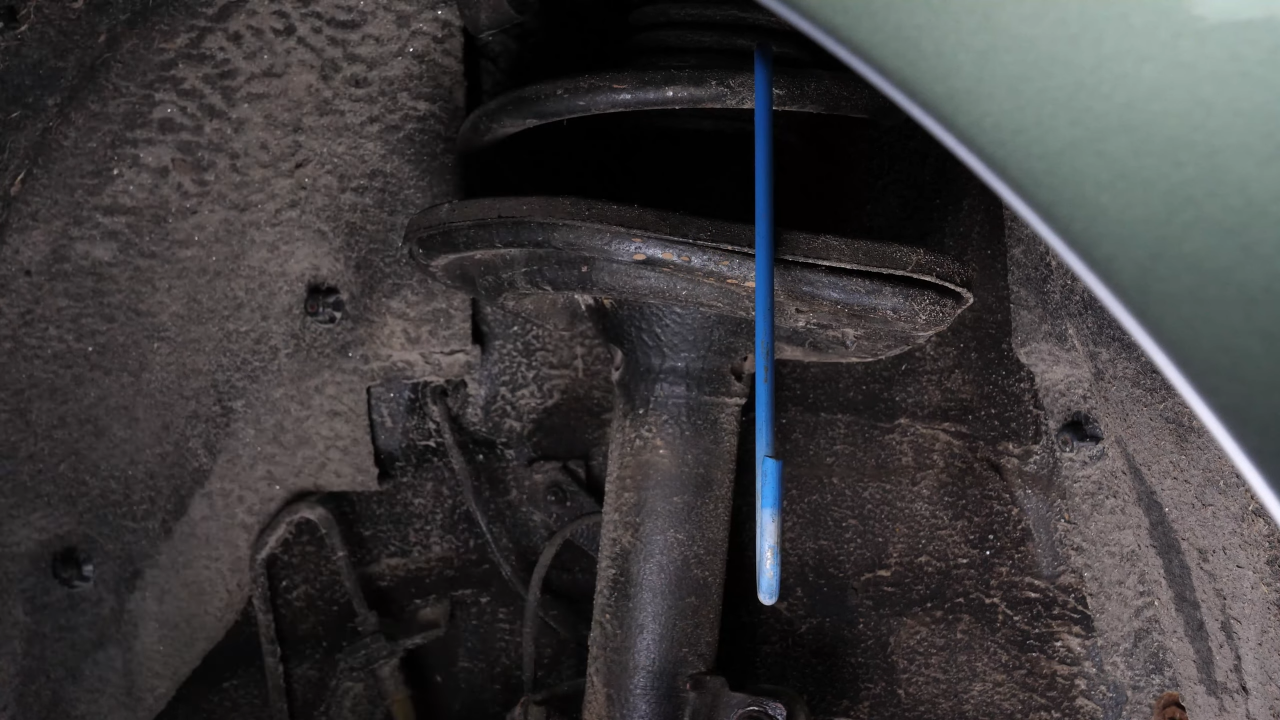
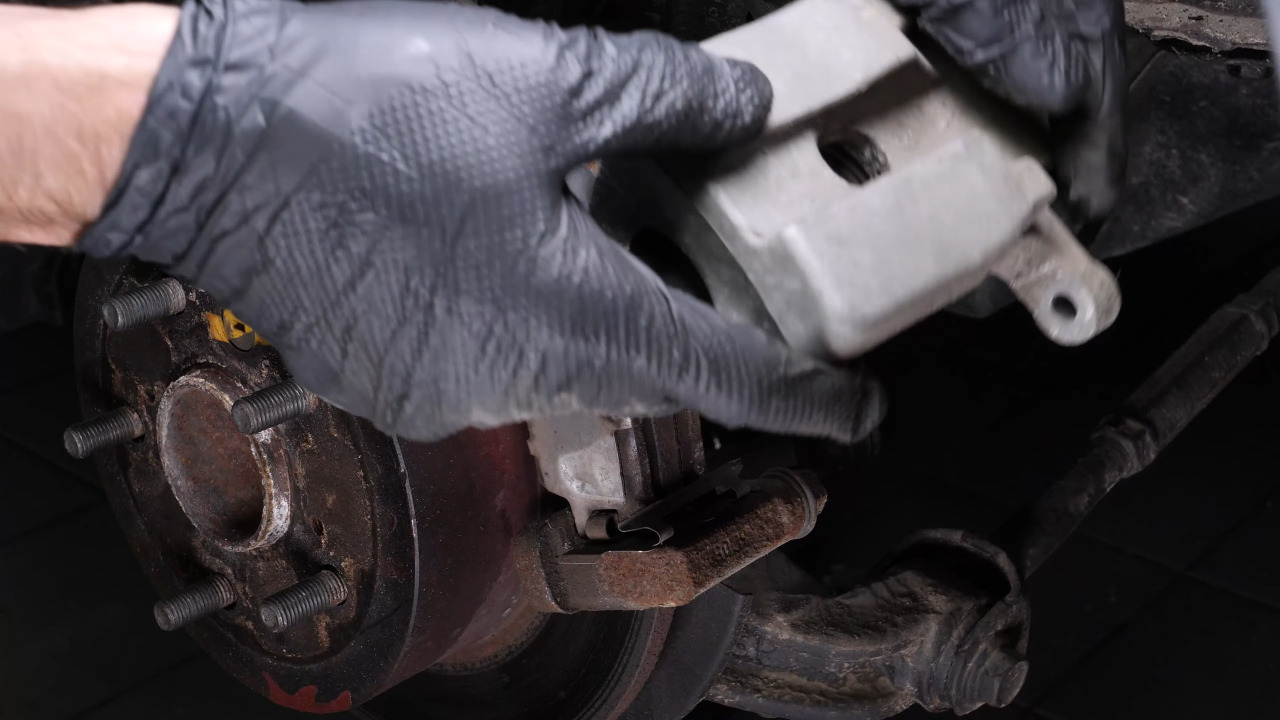
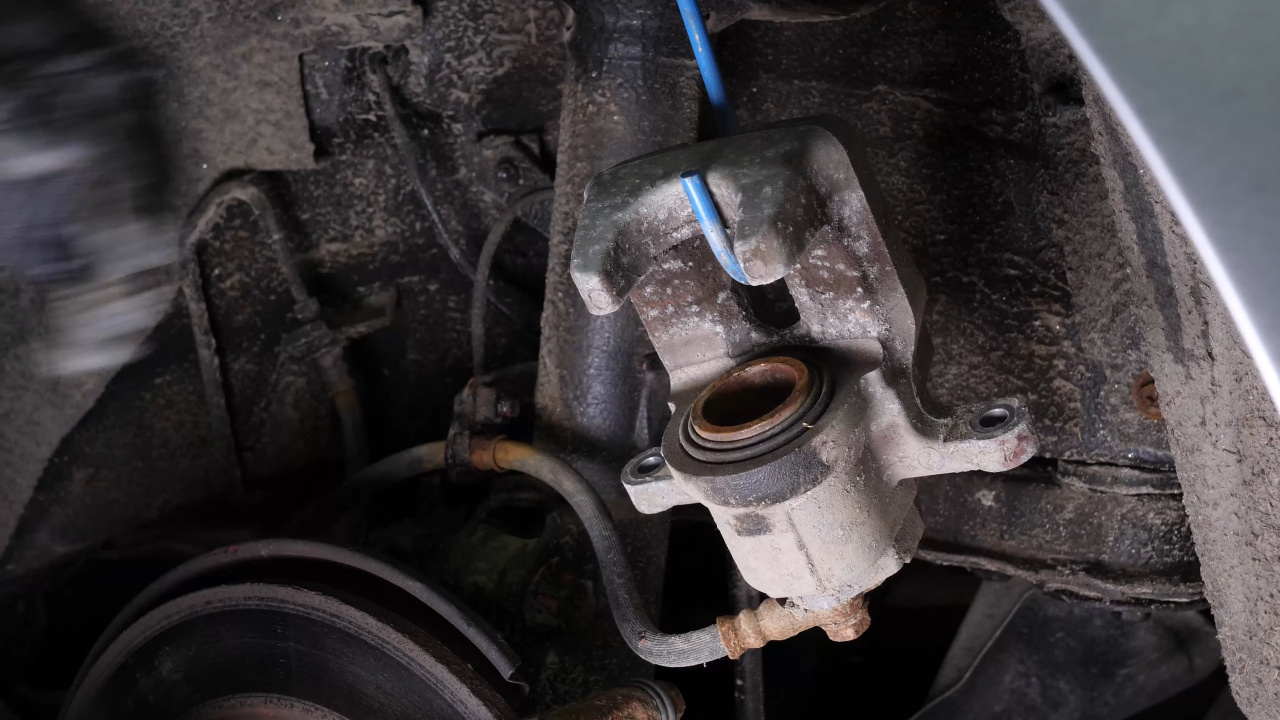
Chapter 7:
Remove the brake pads
Step 1/2
Remove the brake pads by prying them out with a flathead screwdriver.
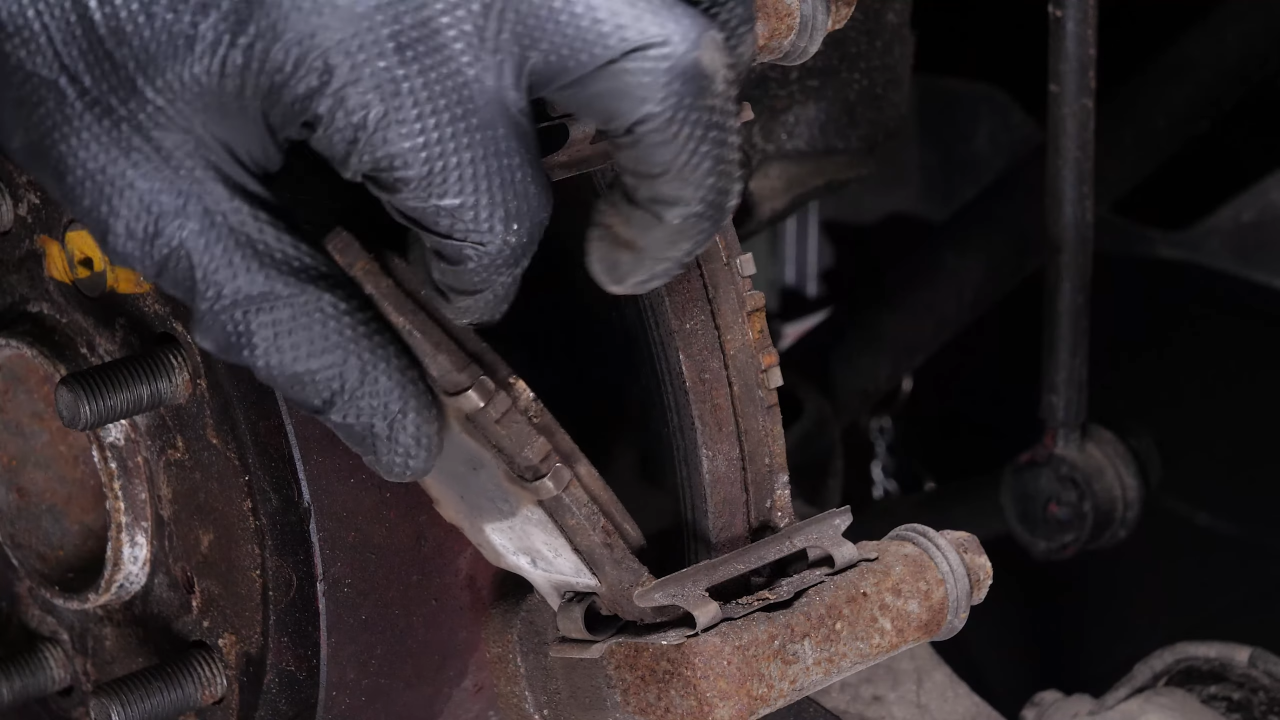
Chapter 7:
Step 2/2
Using a flat head screwdriver, remove the anti-rattle clips.
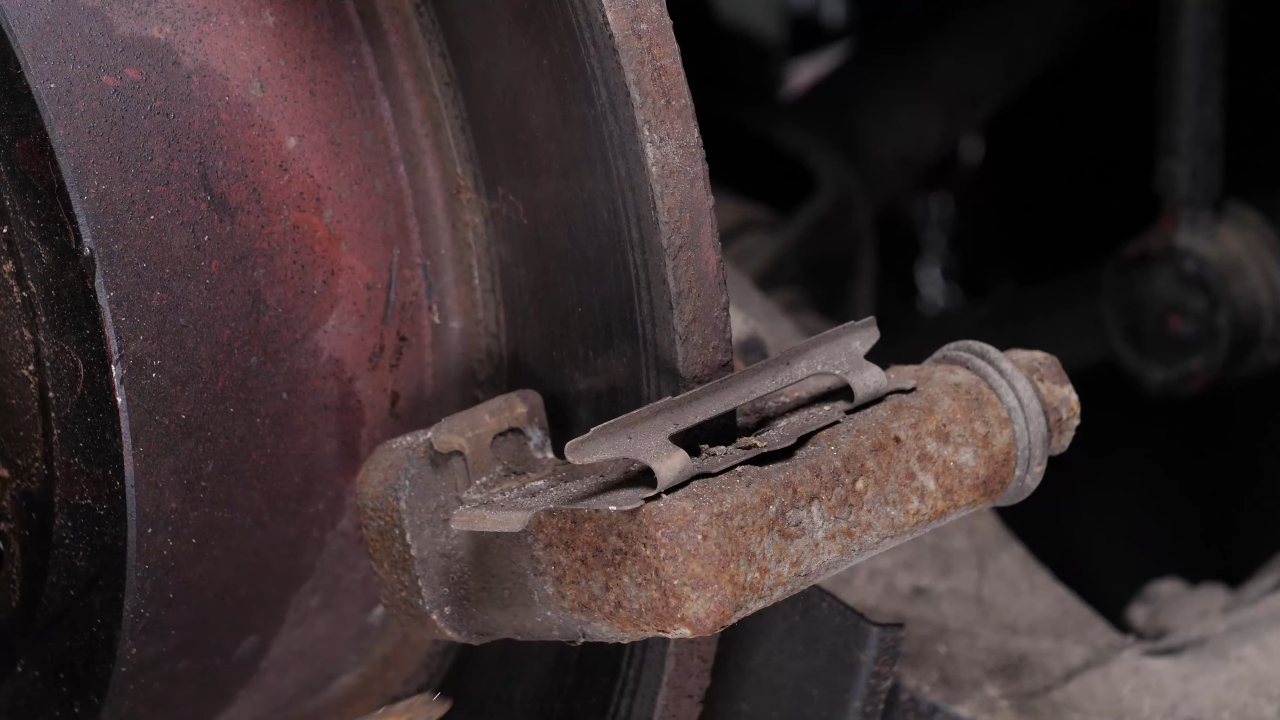
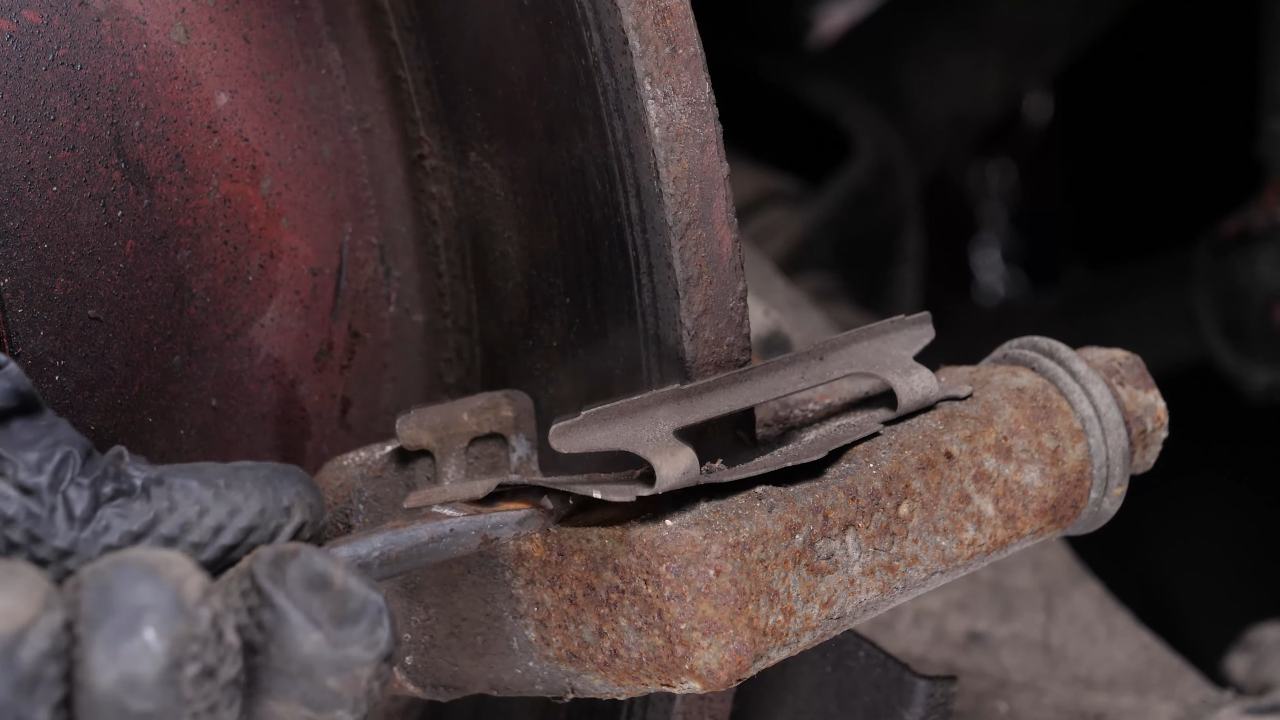
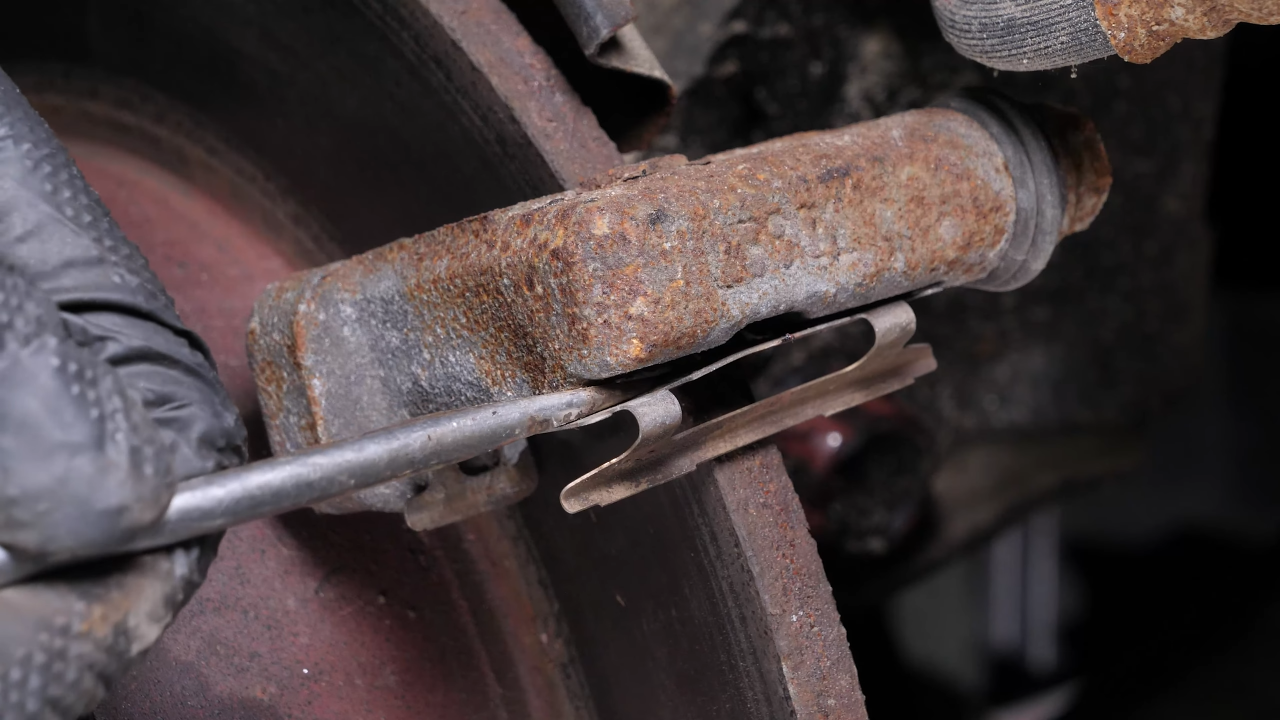
Chapter 8:
Remove the brake caliper mount
Step 1/2
Using a socket wrench and a 17mm socket, unscrew the two holding screws on the caliper mount. Depending on the state of the bolts on the caliper mount, it may be necessary to use a hammer to loosen them.


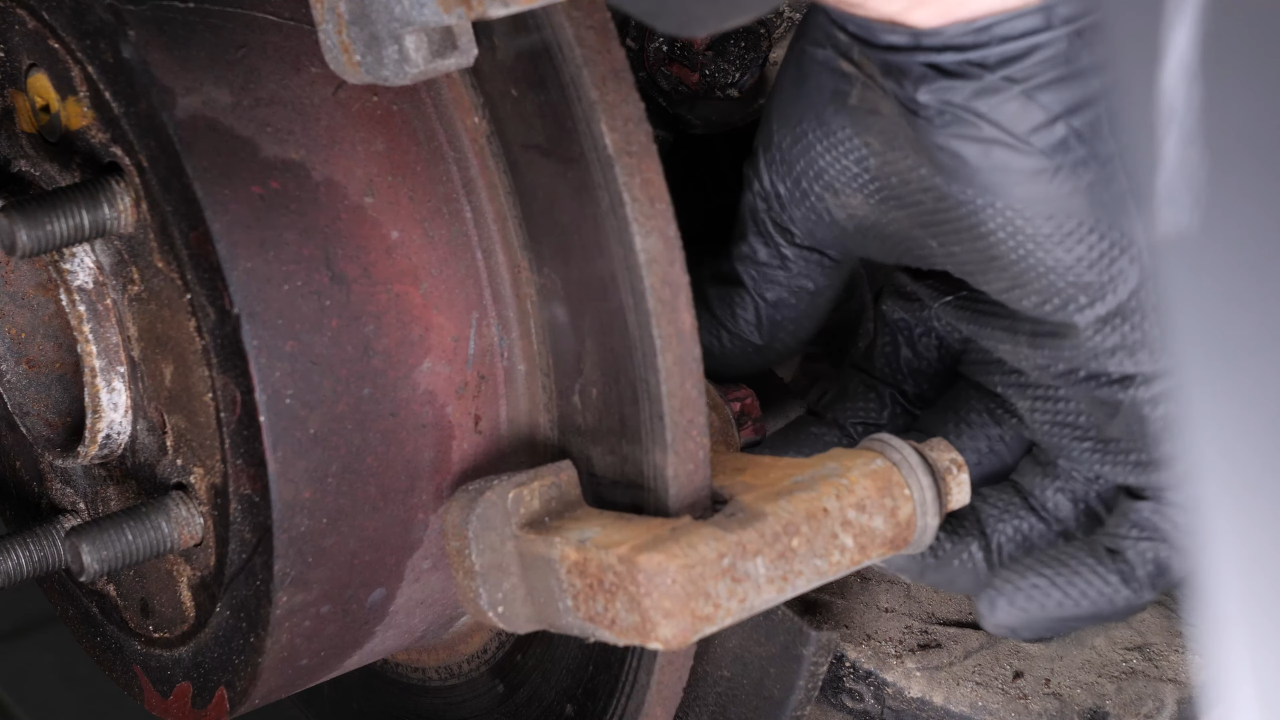
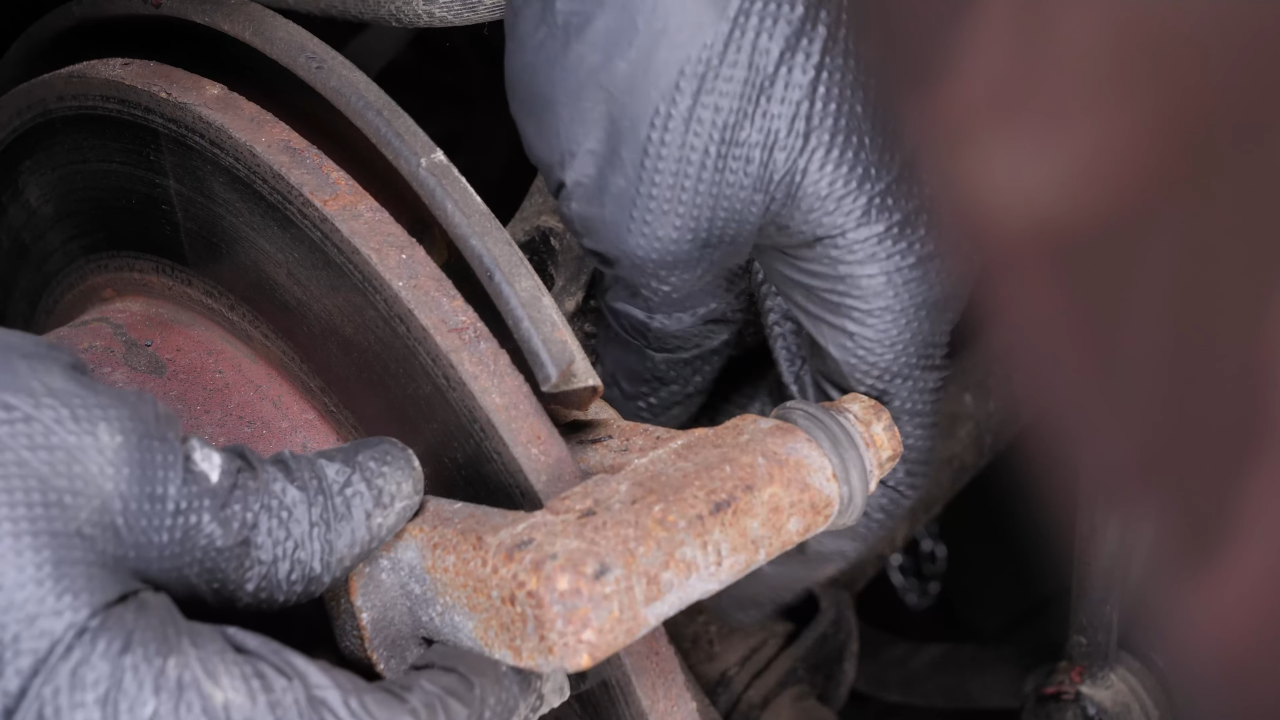
Chapter 8:
Step 2/2
Remove the caliper mount.
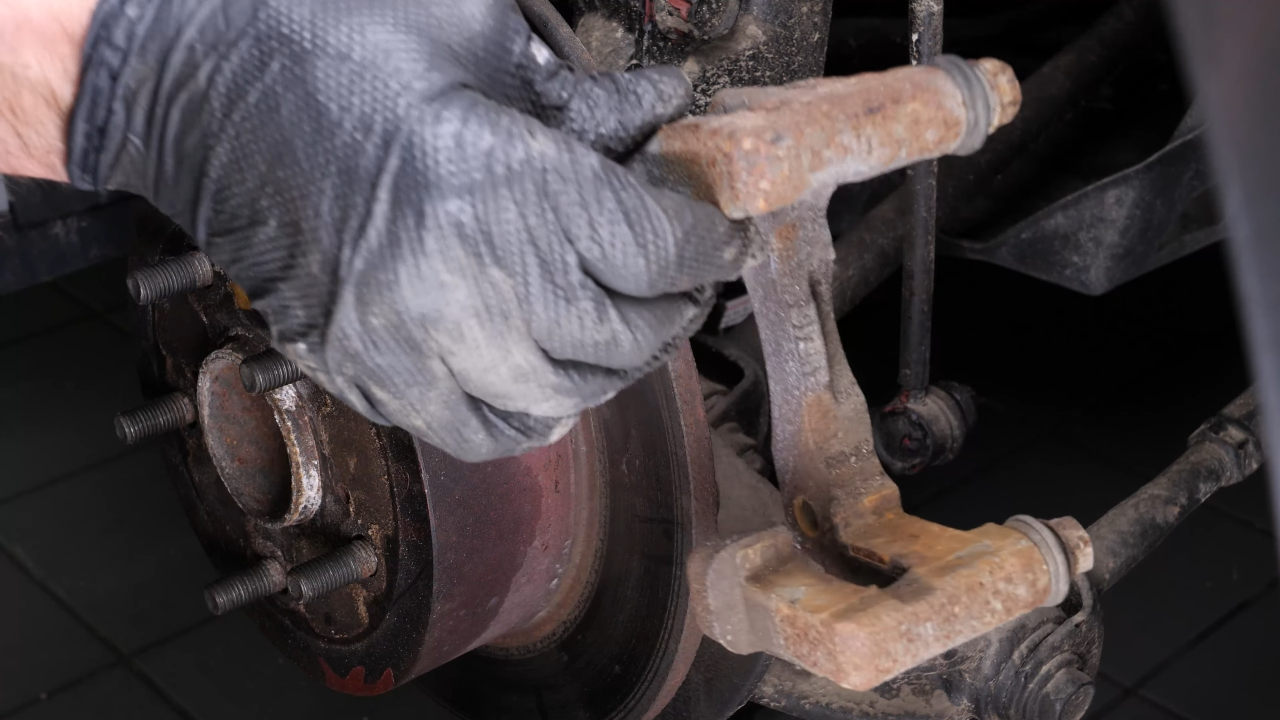
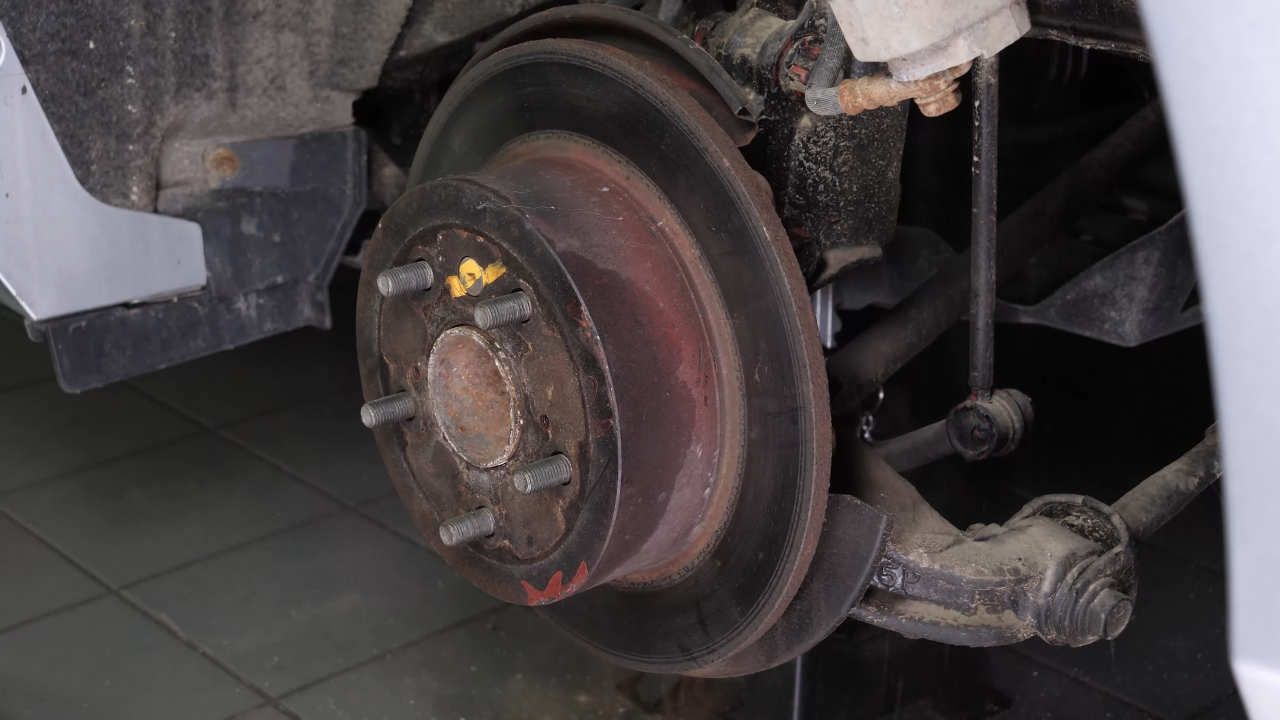
Chapter 9:
Remove the brake disc
Step 1/1
Sometimes the disc may get stuck on the hub, if this happens, use a hammer to remove it. Finally, remove the disc.
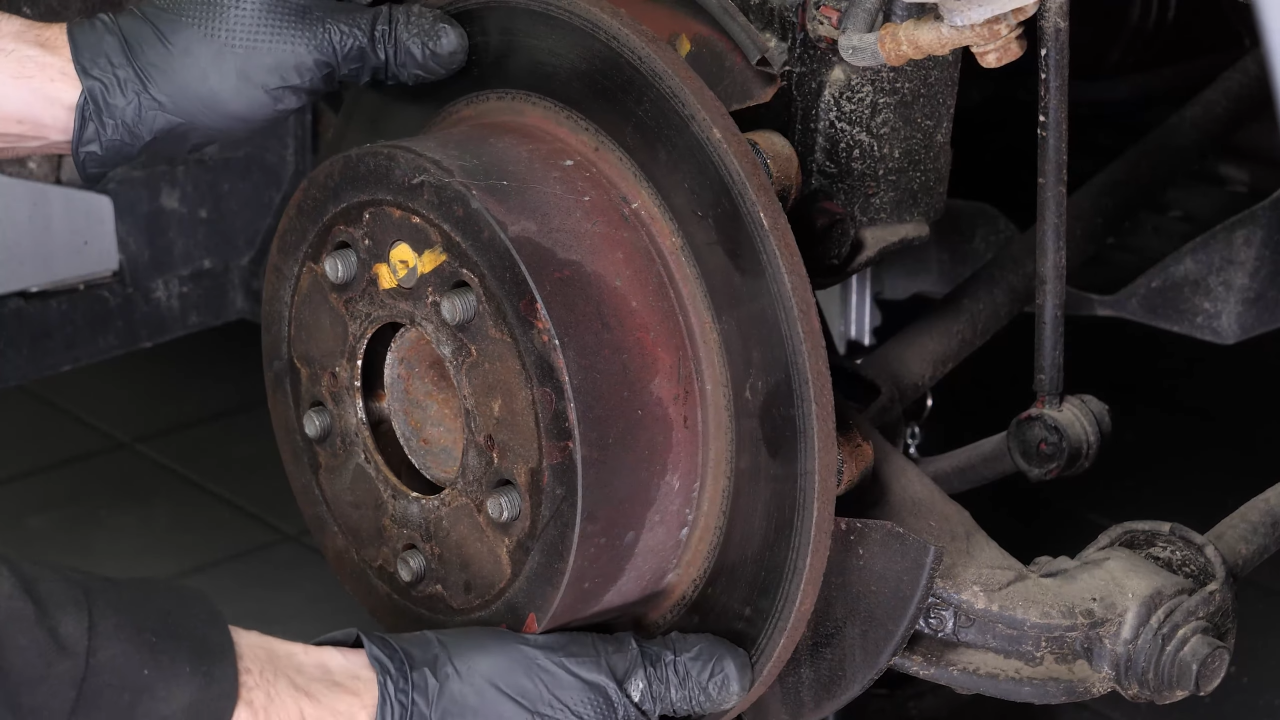

Chapter 10:
Prepare the new brake disc
Step 1/2
Clean the wheel hub with a wire brush.

Chapter 10:
Step 2/2
Before installing the new disc, it is vital to clean it using brake cleaner and paper towels to take off the storage paraffin. If your new disc is coated, you can place it directly onto the wheel hub.
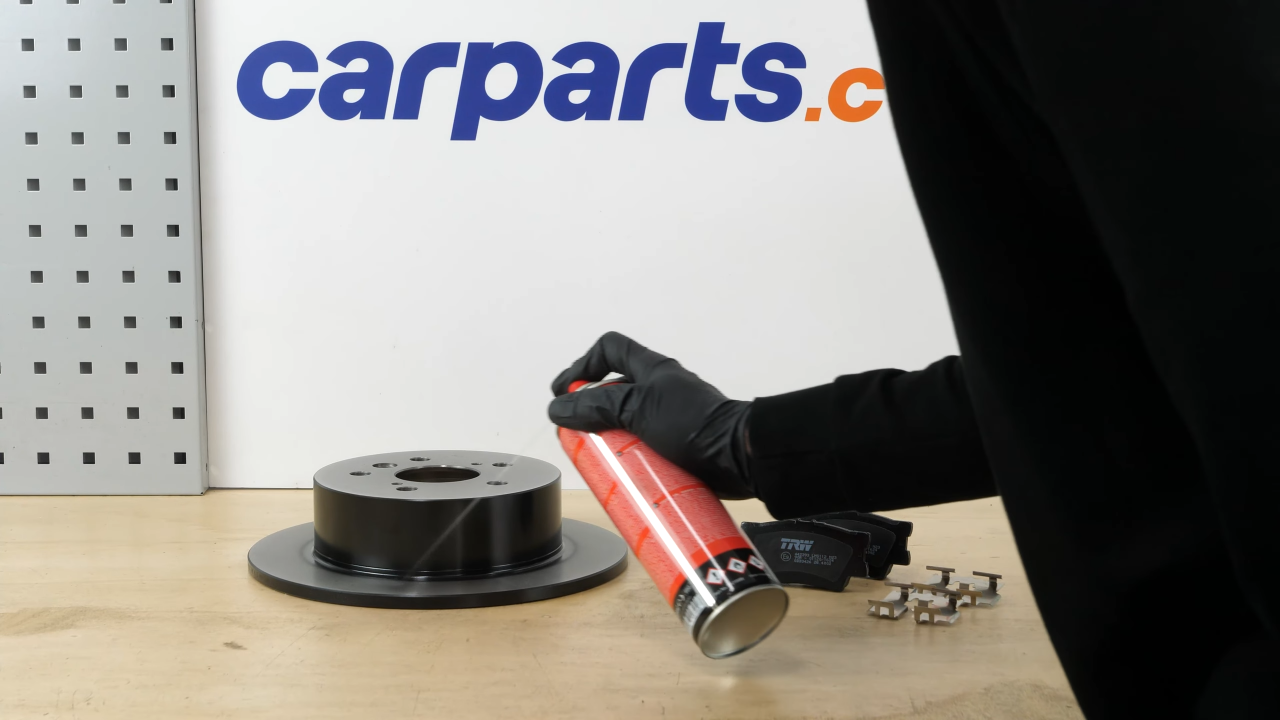

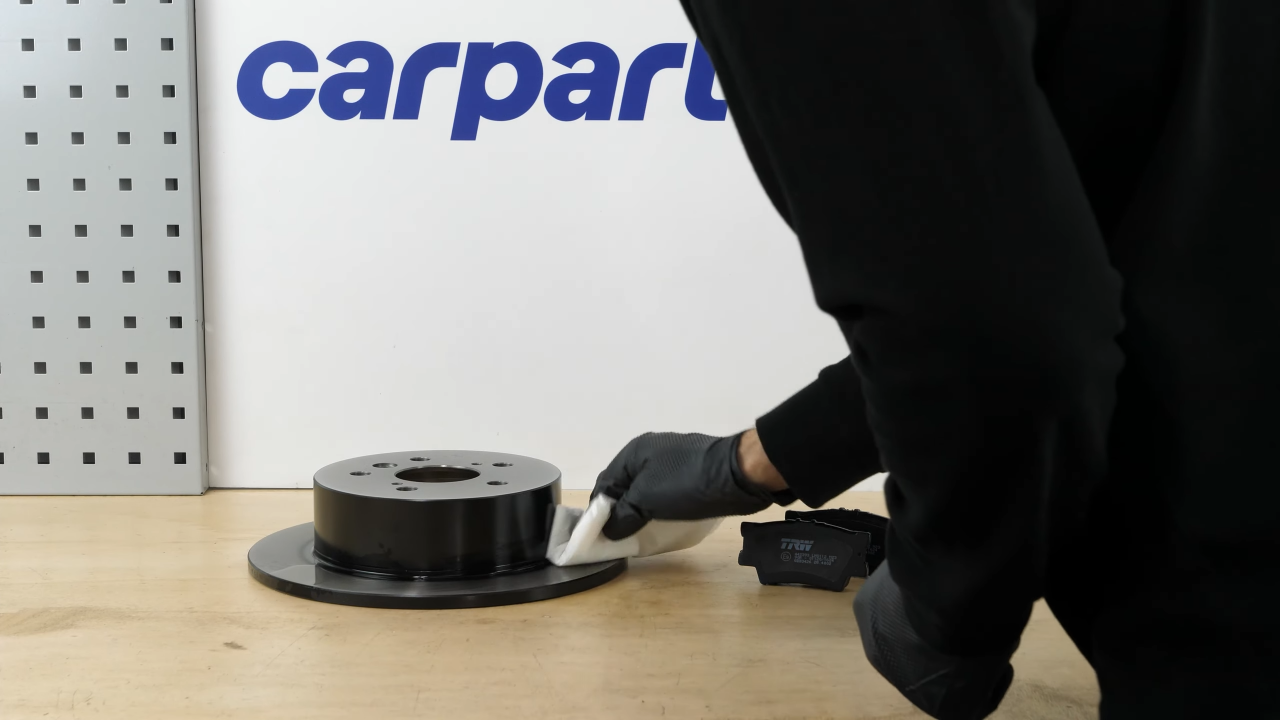
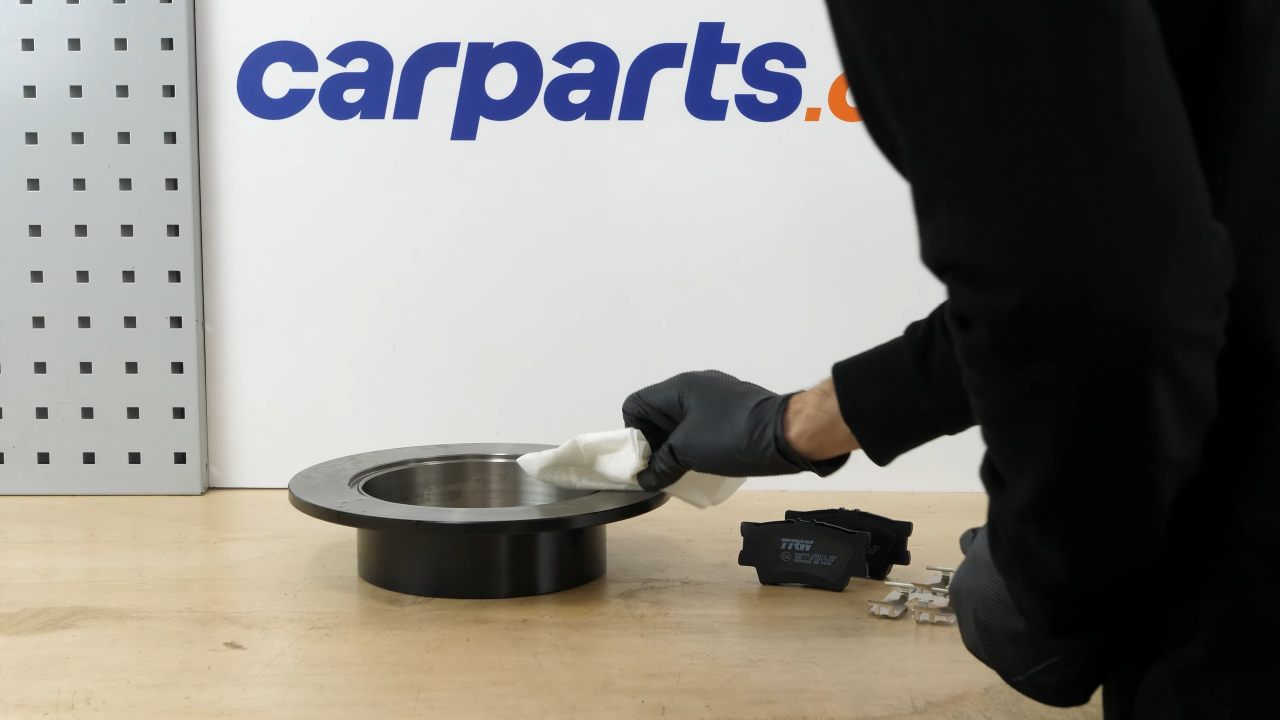

Chapter 11:
Put the brake caliper mount back on
Step 1/3
Brush the caliper mount around the pads to remove any extra rust that could prevent the pads from sliding.

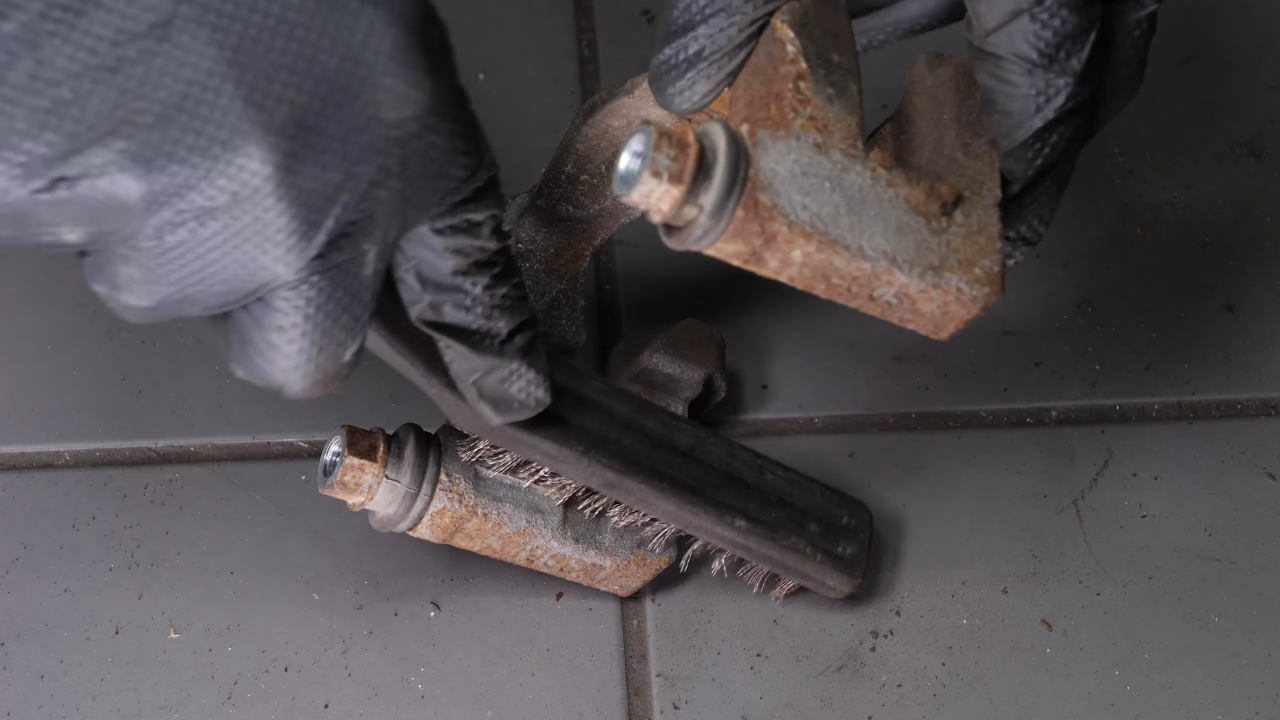
Chapter 11:
Step 2/3
Reassemble the caliper mount by screwing first by hand, then with a socket wrench and a 17mm socket to lock them in place.
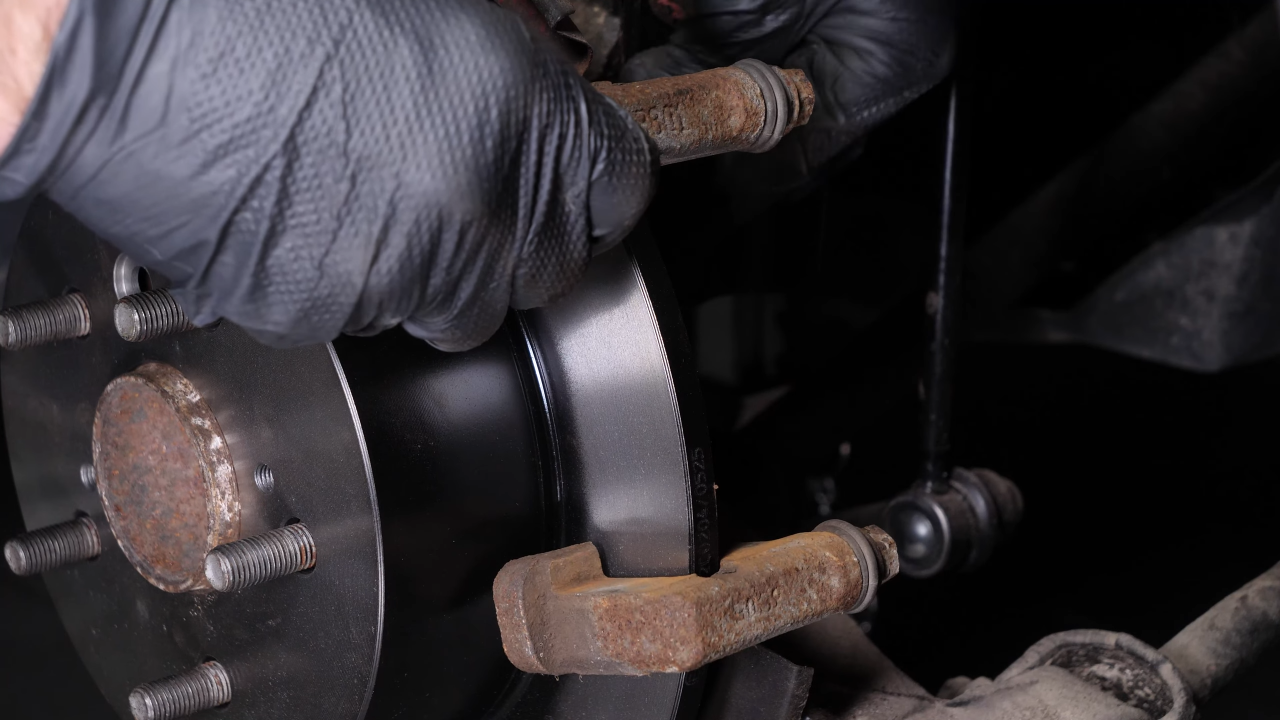


Chapter 11:
Step 3/3
Finish tightening using a torque wrench.

Chapter 12:
Safety tips
Step 1/1
You need to check the sliding of the brake caliper slide pins and the condition of the Caliper slide pin boots. If they look worn, you are advised to replace them with new ones.
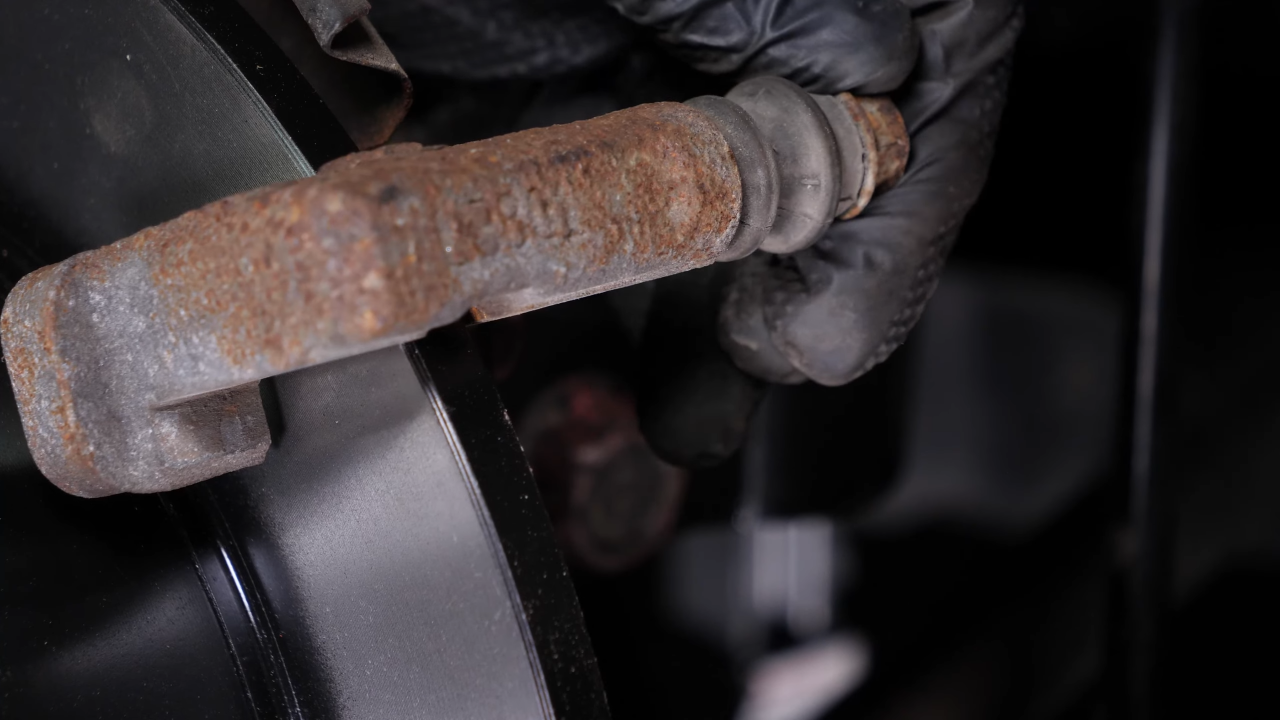

Chapter 13:
Place the new brake pads
Step 1/3
Place the new anti-rattle clips on the caliper mount.


Chapter 13:
Step 2/3
Grab the new pads, and lightly coat the ends with copper grease to help them slide more easily.

Chapter 13:
Step 3/3
Insert the new pads into the caliper mount by sliding them in.
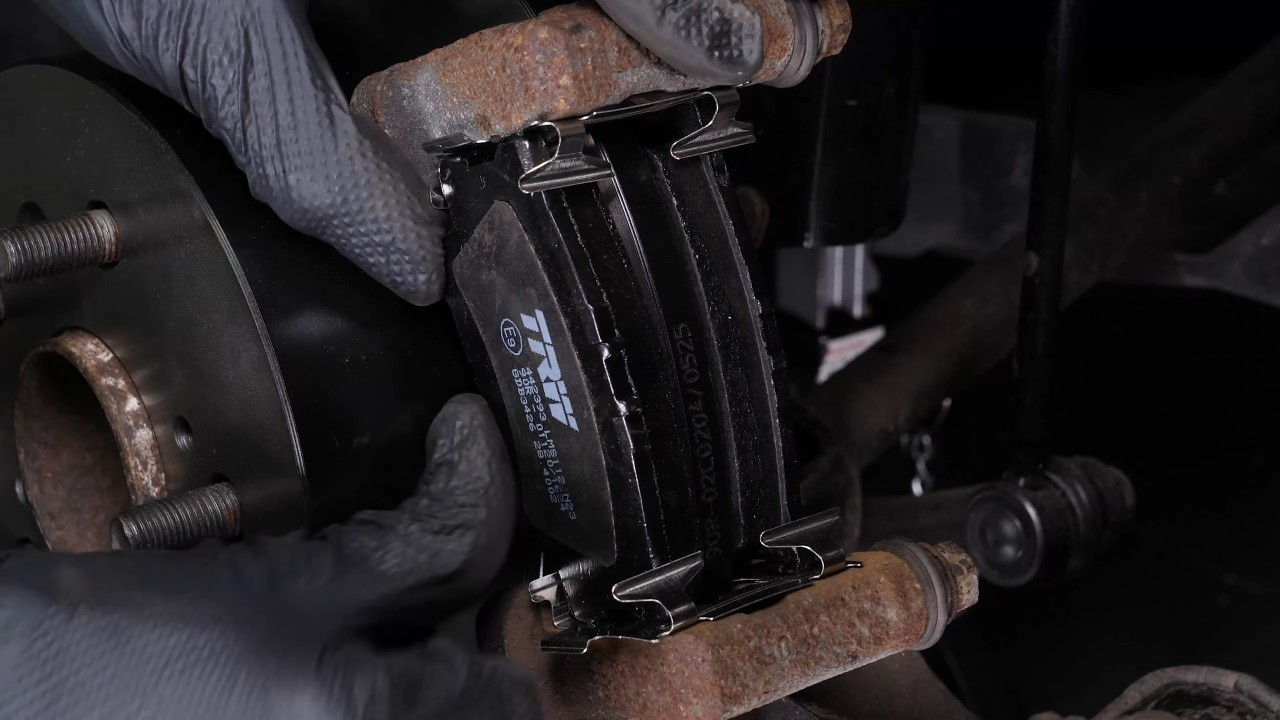
Chapter 14:
Put the brake caliper back
Step 1/3
Grab the caliper.
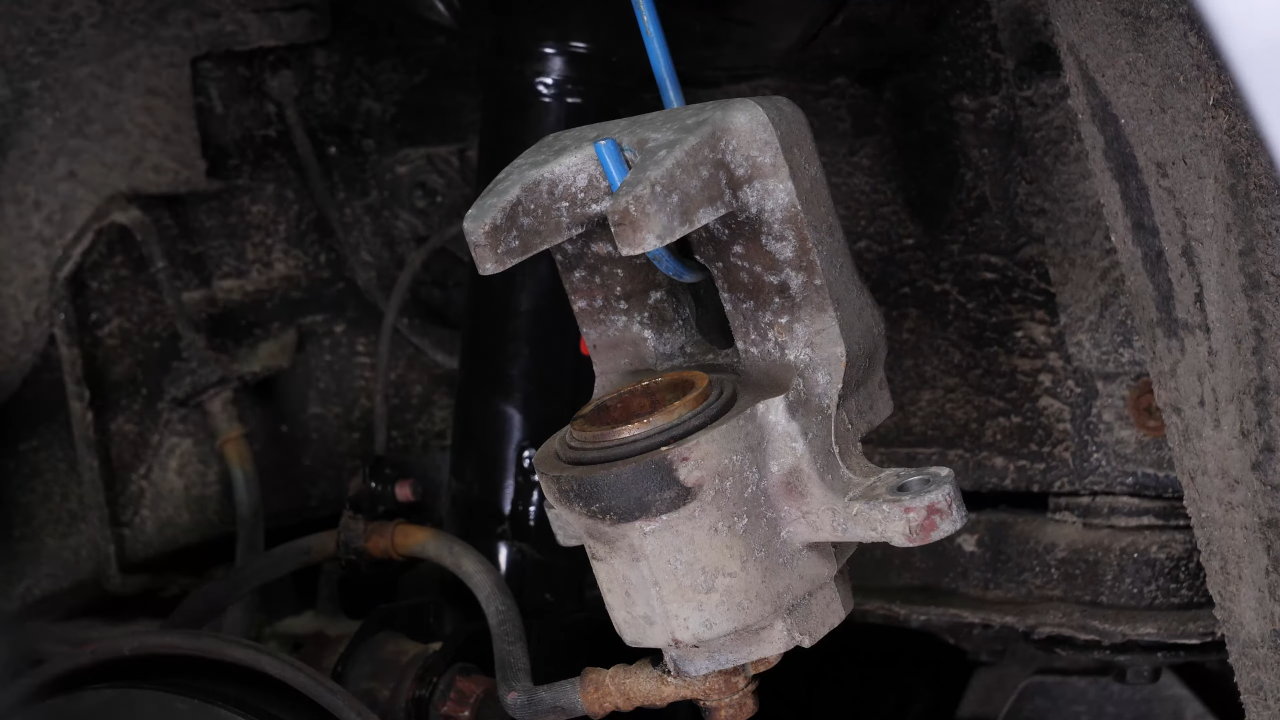
Chapter 14:
Step 2/3
Put the brake caliper back in place and screw in the slide pins, by hand at first. Screw them in using both 14mm wrenches.
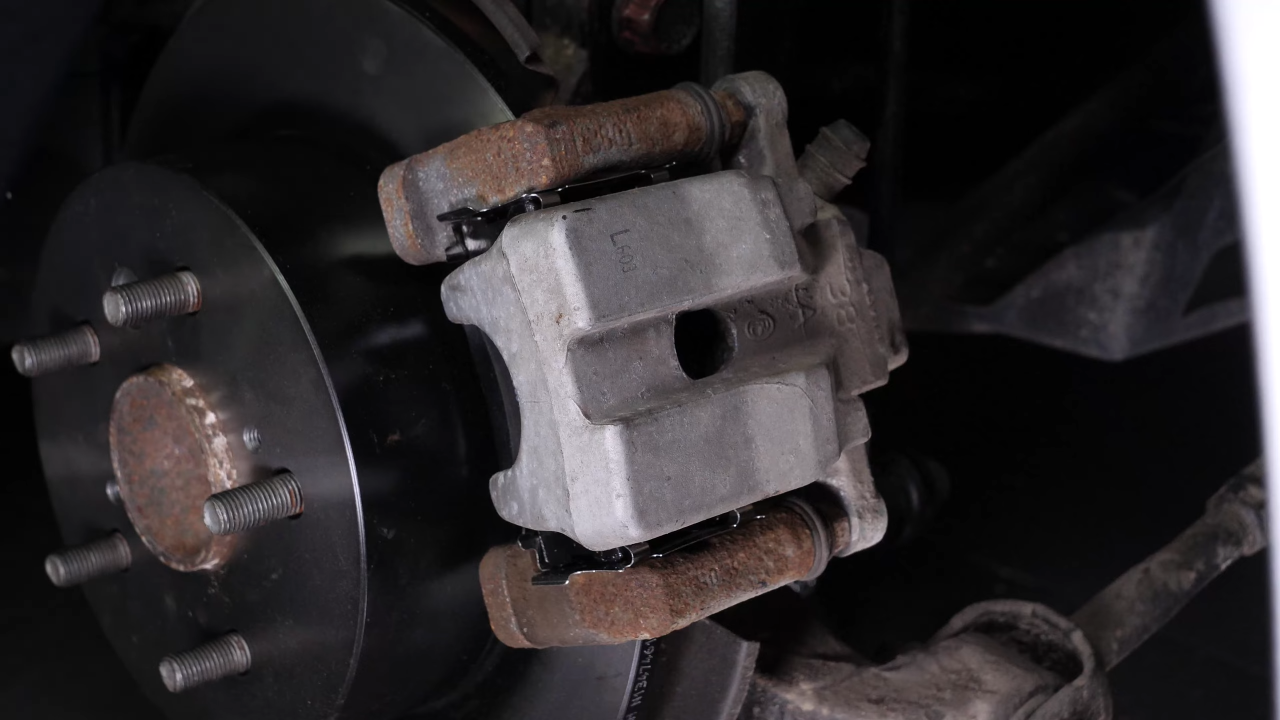
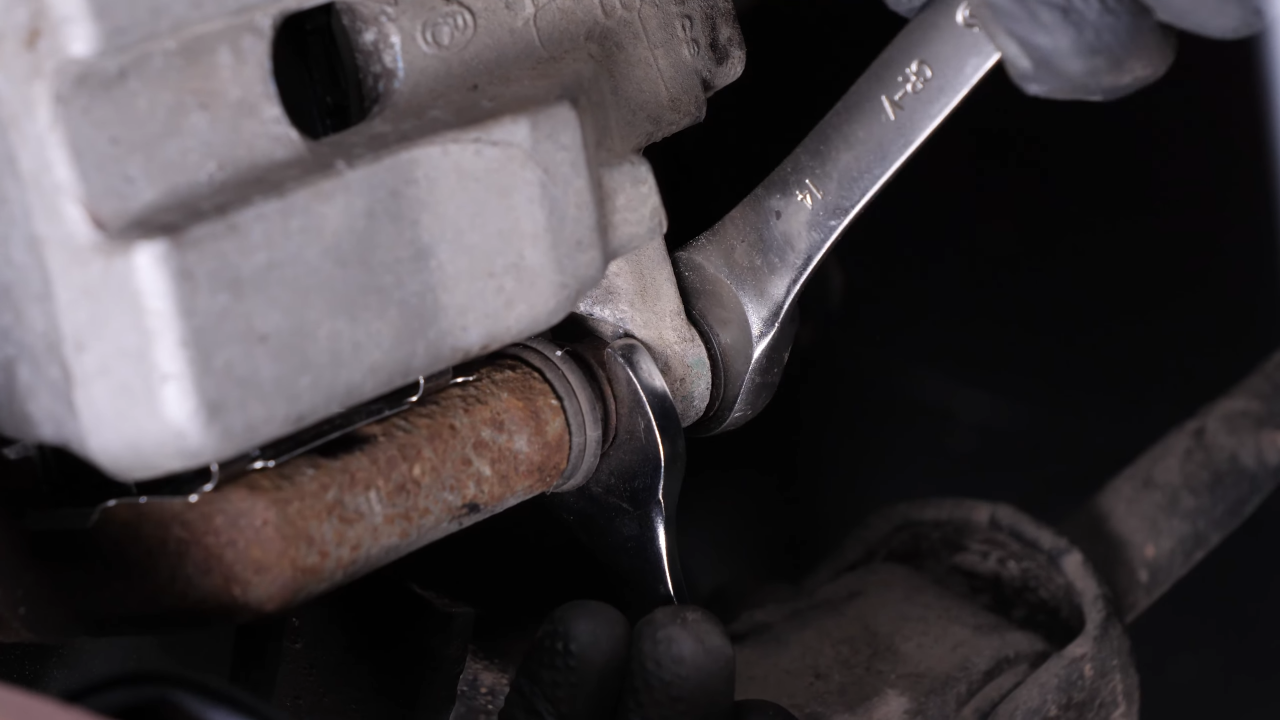
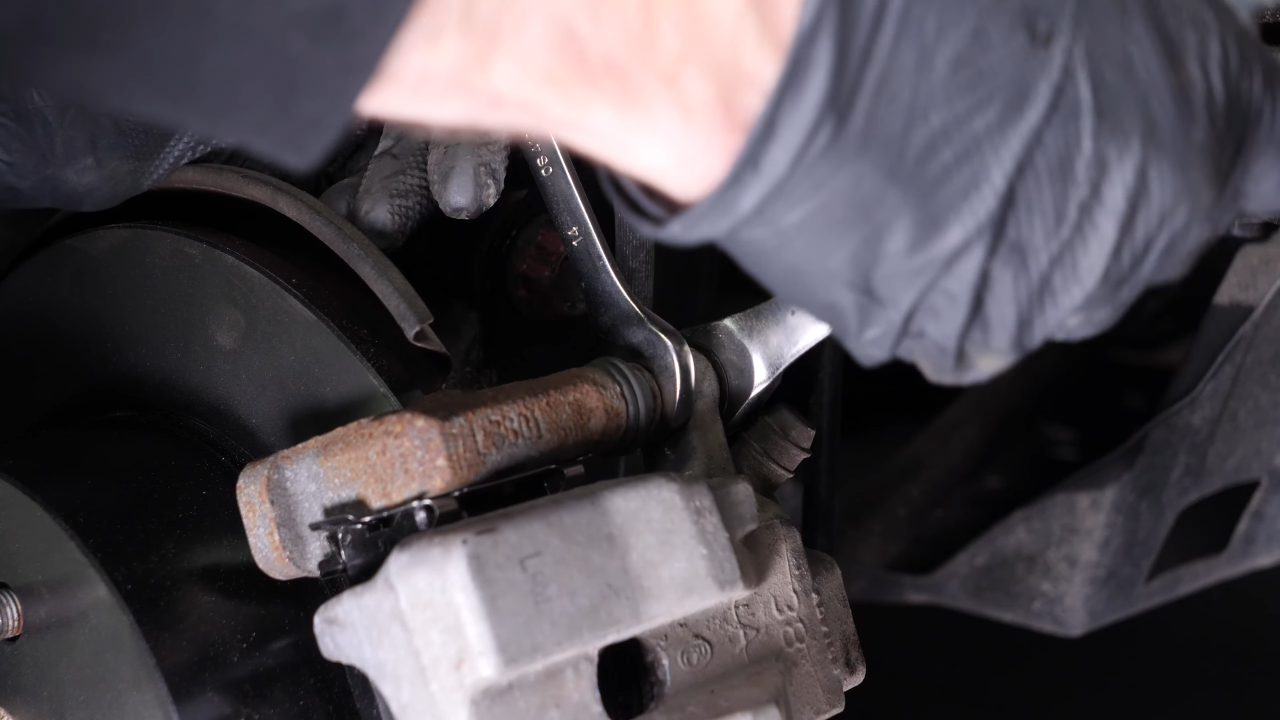
Chapter 14:
Step 3/3
Finish tightening using a torque wrench.
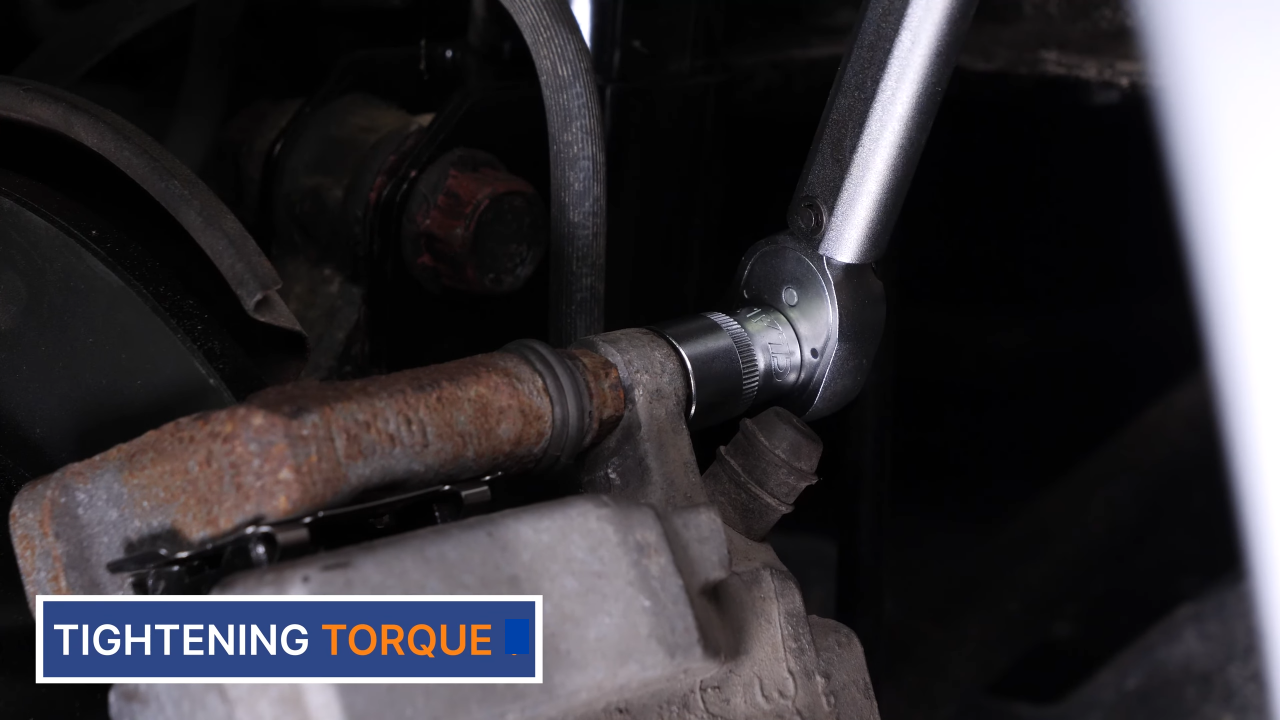
Chapter 15:
Clean
Step 1/1
Don’t forget to remove the cable that you used to hold the caliper.

Chapter 16:
Finalise the reassembly
Step 1/3
In case you adjusted the brake shoes to remove the disc, set the mechanism back until there is a slight friction between the brake shoes and the disc.
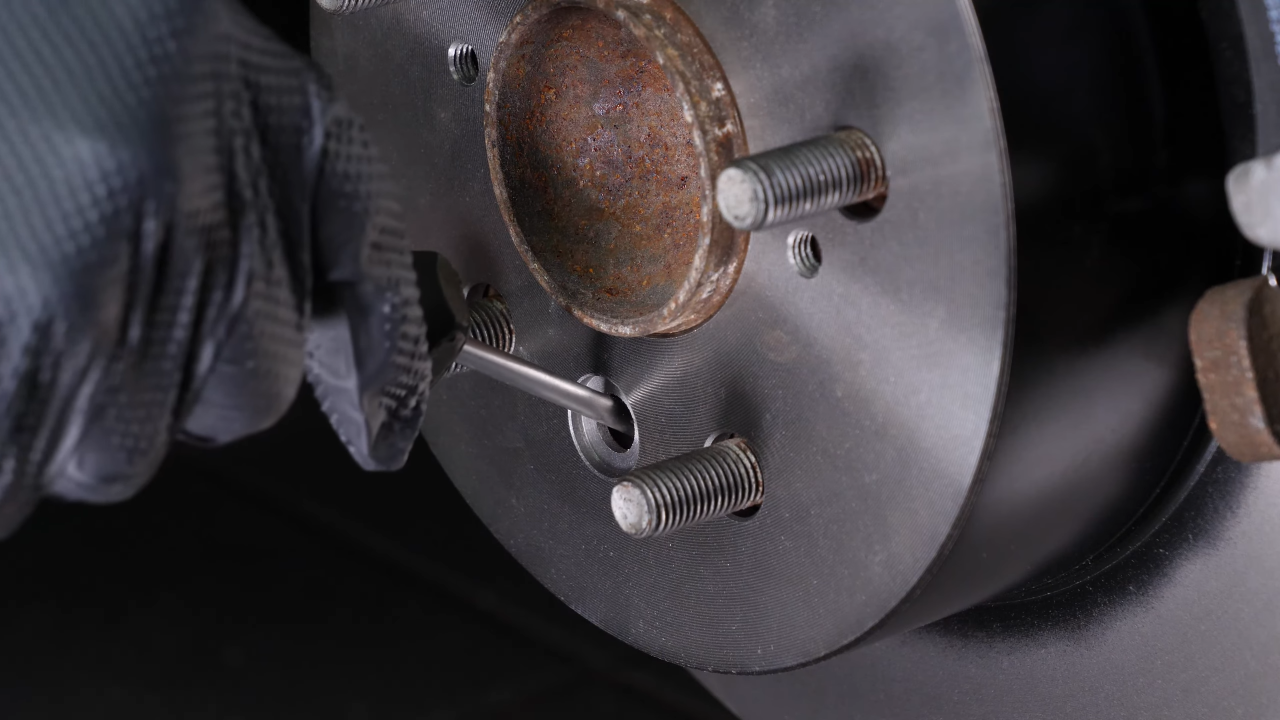
Chapter 16:
Step 2/3
Put the shutter cover back on.
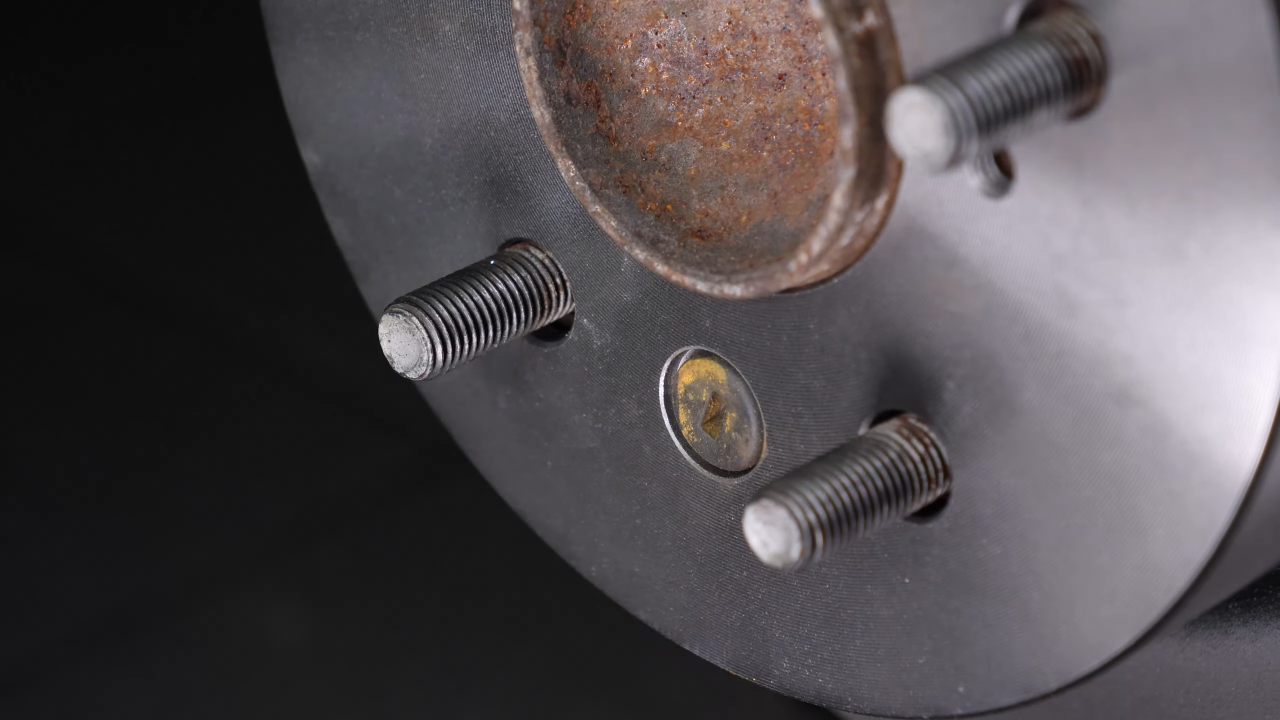
Chapter 16:
Step 3/3
Clean both sides of the disc with brake cleaner and a cloth to remove the grease from the new pads.
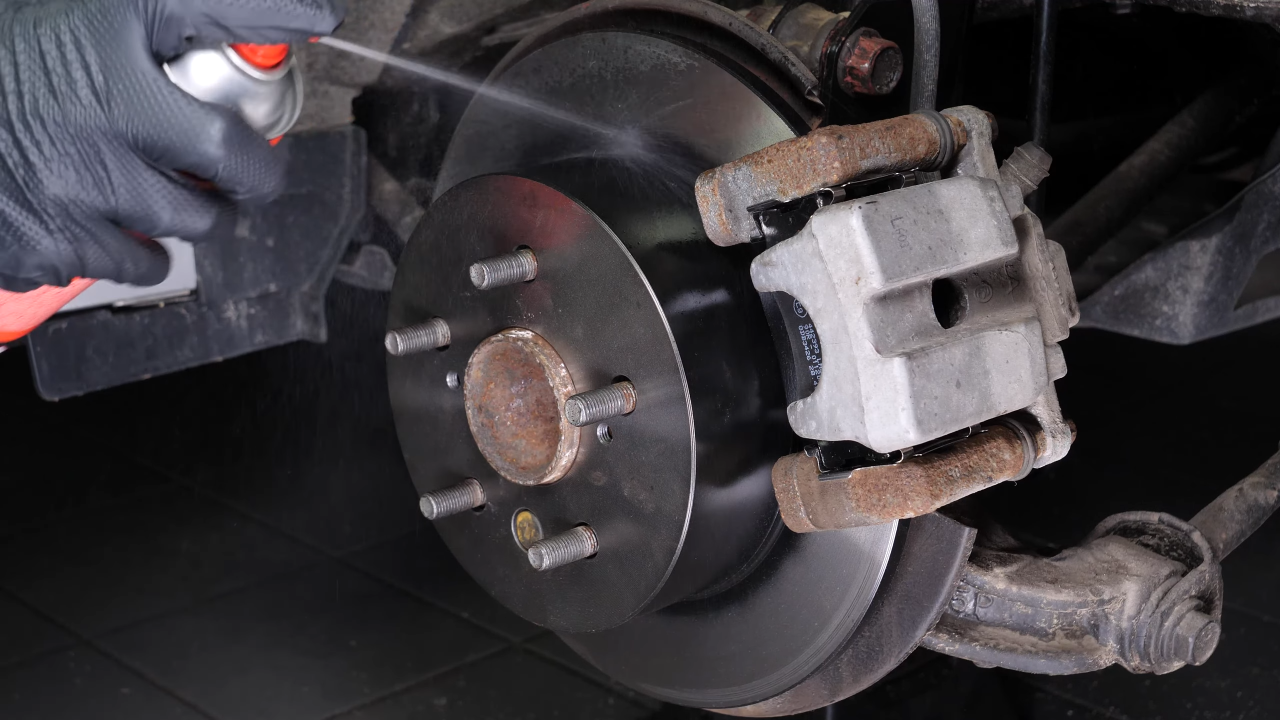

Chapter 17:
Passenger side
Step 1/1
You can now repeat the same process on the other side.
Chapter 18:
Put the vehicle back on the ground
Step 1/3
Then, you will be able to put the wheels back on your vehicle.
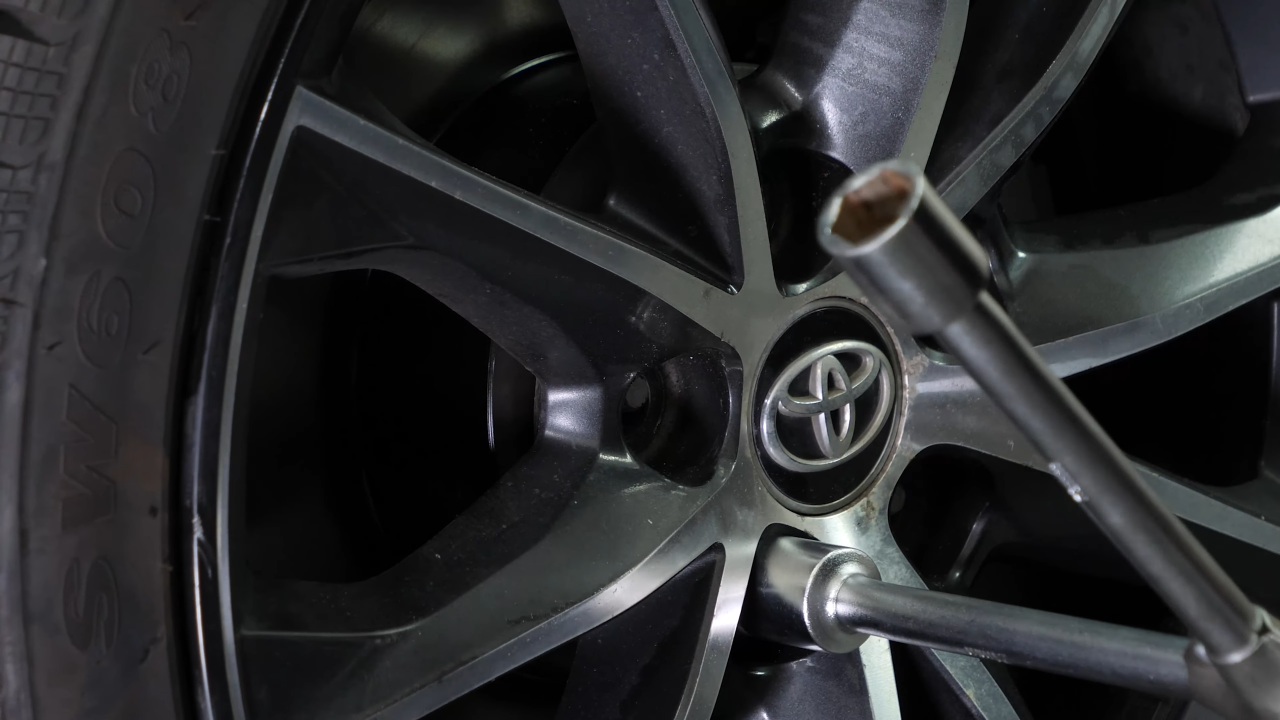
Chapter 18:
Step 2/3
Put the car back on the ground and block the wheels properly.
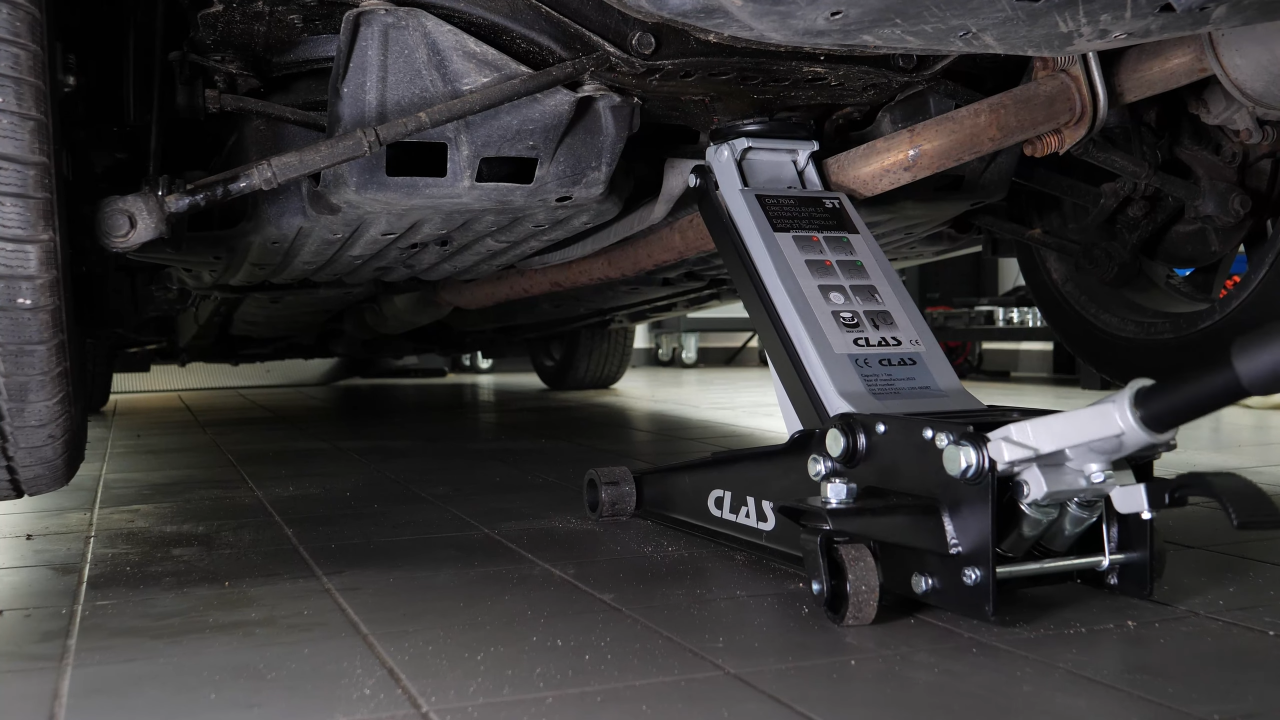

Chapter 18:
Step 3/3
Don’t forget to screw the brake fluid cap back on before starting the car.
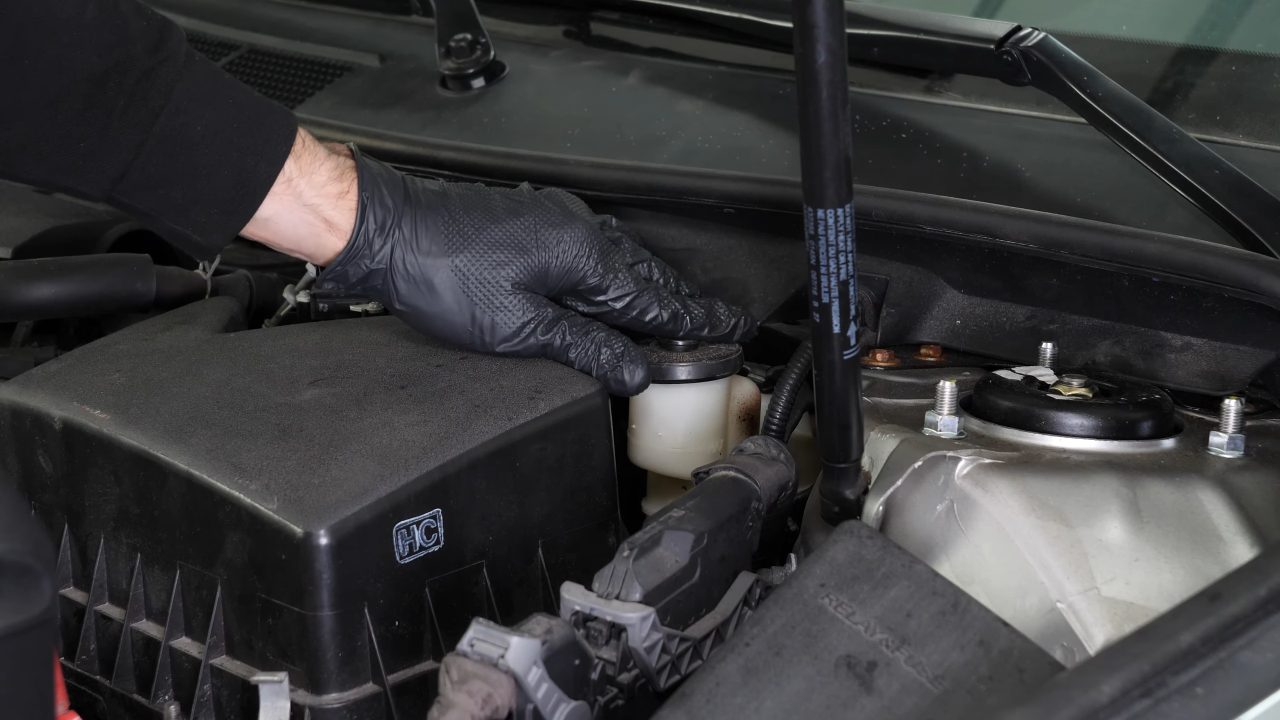
Chapter 19:
Pump the brake pedal
Step 1/3
Attention! Before using your vehicle again, start your car, and pump the brake pedal a few times to push the brake pads together again.
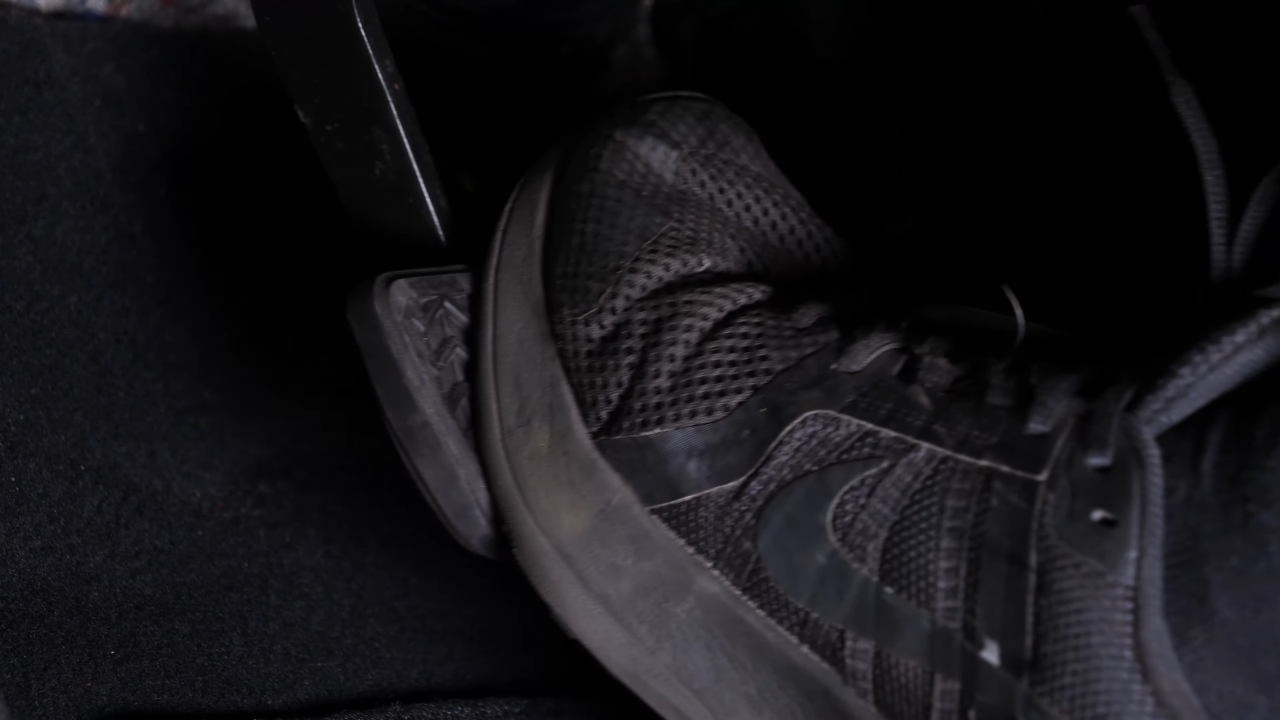
Chapter 19:
Step 2/3
Try to drive smoothly and avoid sudden braking for the first 30 miles or so, to avoid glazing the new pads.
Chapter 19:
Step 3/3
Operation complete.